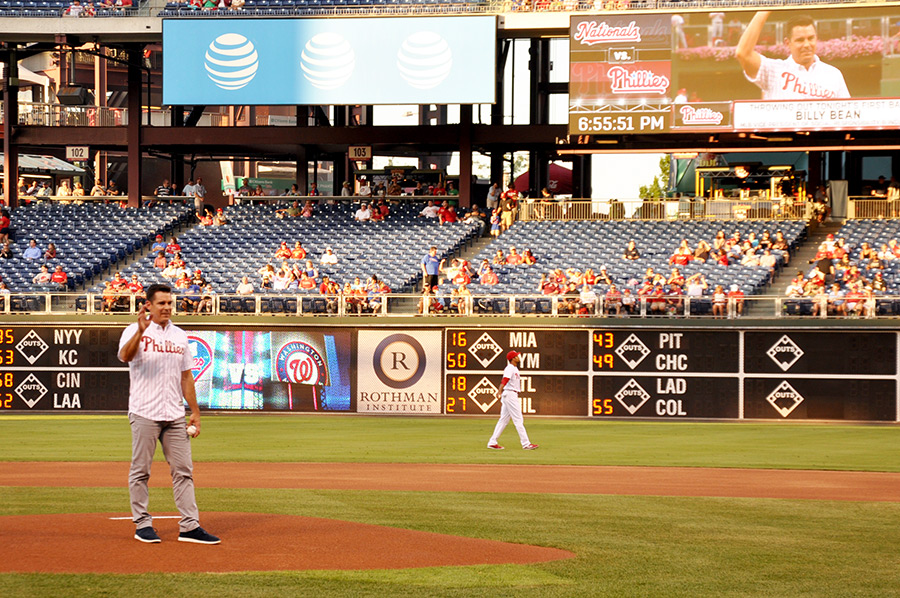
Let me say right off the bat that there are many, many more athletes than could possibly even fit in this column. I hope some of you will take some time to surf the ’Net and find those who are/were out in your favorite sport.
Let’s start with some athletes who have come out in the past several years. There is Michael Sam, Wade Davis, Tom Daley, Robbie Rogers, Jason Collins, Brittney Griner, Johnny Weir, Brian Boitano, Gus Kenworthy, Elena Delle Donne, Sue Bird and Keegan Hirst, to name a few. There are reportedly five college football players this year who are openly gay, according to outsports.com. The Gayborhood’s state representative, Brian Sims, was the first openly gay college football player and captain of the team.
https://epgn.com/columns/get-out-and-play/8141-wade-davis-is-making-a-difference-in-young-lgbtq-lives
https://epgn.com/columns/get-out-and-play/10464-openly-gay-soccer-star-scores-in-philadelphia
Thanks to the Internet, you can now find an LGBT athlete for just about every sport, and from a large percentage of countries around the world. The number of South-American soccer players who are openly gay increases almost yearly. European athletes, who are for the most part in more LGBT-friendly environments than players in the United States, swell in numbers every year also. Believe it or not, there is even at least one gay sumo wrestler.
Through the decades, there have been milestones that have set the foundation for these present-day athletes. Some of them include:
- Sheryl Swoopes, a six-time WNBA All-Star, came out as a lesbian in 2005 while still playing basketball. At that time, she’d already been married and had a child. In 2011, she was reportedly engaged to a man.
- Billy Bean came out in 1999 after retiring from baseball four years earlier. He is currently the MLB LGBT ambassador and travels to games for LGBT nights and speaks to organizations about diversity and inclusion. Bean threw out the first pitch at the Phillies’ first “official” LGBT night in 2016.
https://epgn.com/columns/get-out-and-play/10949-and-the-title-was-gay-baseball-player-billy-bean
- After winning Olympic gold medals in 1984 and 1988, Greg Louganis publicly stated that he was HIV-positive. Shortly after, he wrote his memoir “Breaking the Surface,” in which he declared he was gay. Thousands of gay men stood hours in lines across the country when he went on his book-signing tour.
- In 1981, Billie Jean King was “outed” when her ex-lover, Marilyn Barnett, took her to court for “galimony.” King is now focused on her Billie Jean Foundation that supports LGBT youth. She has made significant contributions to the Philadelphia Freedom Tennis Team and Philadelphia youth programs.
https://epgn.com/news/local/7328-25240693-freedom-love-in-the-afternoon
- In that same year, Martina Navratilova stated she was a lesbian in an interview with the New York Daily News.
- David Kopay played football for the 49ers, Lions, Redskins, Saints and Packers. He came out in 1975 and published a biography not long after. In the book he “outed” Jerry Smith of the Redskins. Smith never admitted to being gay and he died of AIDS in 1987.
- In 1968, Tom Waddell placed sixth in the Olympic decathlon. Eight years later, Waddell and his partner, Charles Deaton, were the first gay men featured in the “Couples” section of People magazine.
- In 1981, plans began for the first Gay Olympic Games. During the process, a lawsuit from the Olympic Committee forced a name change; the first Gay Games took place in San Francisco the next year.
And then there was Bill Tilden
Bill Tilden won the men’s singles title at Wimbledon in 1920, the first American-born man to win at the tournament. Born in 1893 in the Germantown section of Philadelphia, he went on to win twice more at Wimbledon and still holds the record for consecutive U.S. Open wins by a man. He dominated in tennis in a way and time as baseball was dominated by Babe Ruth, according to Philadelphia author Allen Hornblum, who has written a book about him, which is scheduled to be released early next year.
Tilden was always open about being a homosexual — as gay men were generally referred to in that era — and his 6-foot-2 frame and classic good looks painted a strong positive image in the public’s eye. In 2016 and again this year, supporters of Tilden, including several former star tennis players, pushed for the Pennsylvania Historical and Museum Commission to approve a historical marker at or near the Germantown Cricket Club, near where he grew up.
It was turned down both times.
Tilden had a misguided predilection for teenage boys. He was arrested more than once and even spent time at a “prison farm.” But the facts and record are muddy on the exact incidents. One that is regularly brought up involved a 14-year-old in his car, but many other references and allegations are sketchy to incomplete. There were dozens of young men over the years who took lessons from him, yet not one of them reportedly filed any police reports regarding molestation.
Timing can be so critical with historical markers, statues and other historical elements, as seen in recent months with Confederate monuments. A member of the PHMC noted that the process would likely have passed more easily prior to 2011; that was around the time that the accusations against Penn State’s Jerry Sandusky mounted. And while no one is outright calling Tilden a sexual predator, just that recent issue has put a black cloud over his legacy, to a small degree. And let’s face it: Pennsylvania isn’t exactly state number one when it comes to progress, empathy and maturity about recognizing a person’s talent and their downfalls together.
Perhaps next year or soon after, a more-enlightened board of PHMC members will see a way to acknowledge his extraordinary abilities as an athlete while accepting his frailties as a man.
Scott A. Drake was the 2015 Sigma Delta Chi national winner for best sports photo and the 2017 Professional Keystone Press Awards winner for best sports column in a weekly paper. If you have a person or event you think should be highlighted, email scott@epgn.com.

